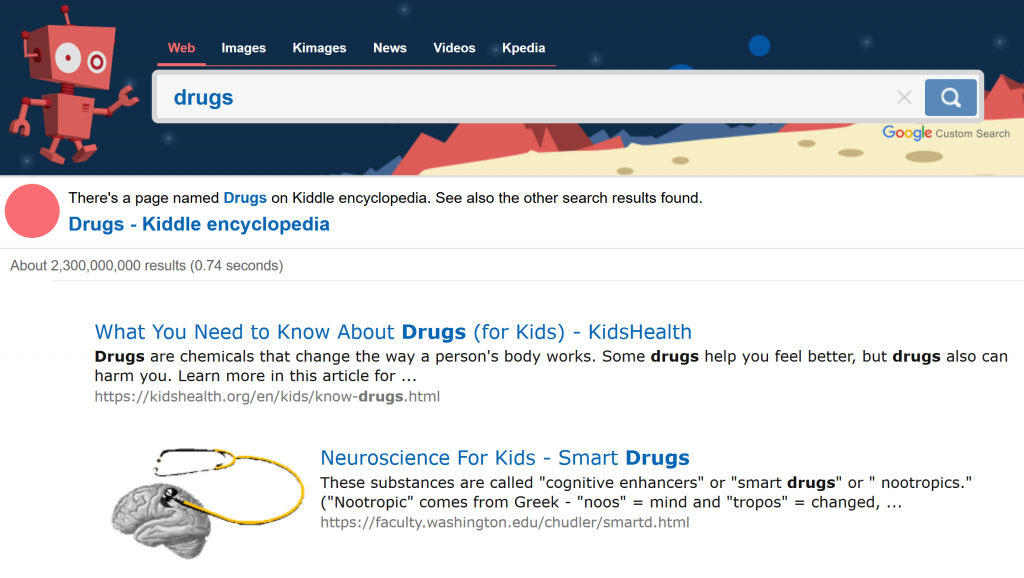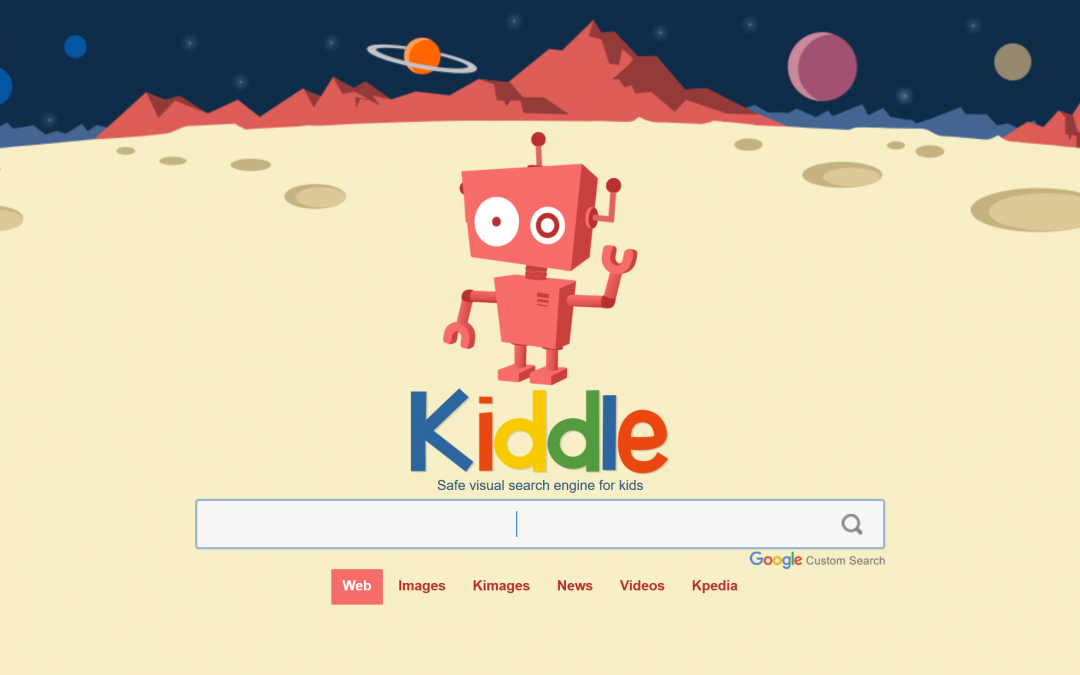If you’ve read our recent post about the dangerous new Momo Challenge, then you may be wondering about just how safe your kids are when browsing online content. Sure, you can apply all the parental controls and limitations you want, but if a malicious third-party is determined enough, then you may not always be able to shield them from unpleasant content when they use the internet.
However, there are certainly tools out there that can reduce the chances of the kids finding questionable content in the first place. And one of those tools, released by web giant Google, is a purpose-built search engine called “Kiddle“.

The benefit of Kiddle.co
Kiddle has been built on top of Google’s ‘SafeSearch’ functionality, which is designed to filter out pornography and other offensive content when switched on. According to Google, it is not foolproof, but it does help to stem questionable content from reaching your kids.
Though Kiddle has existed in some form for around half a decade, it has been increasing in popularity more recently, whilst at the same time Google SafeSearch has improved, too. But the benefit of Kiddle over SafeSearch is that many results returned through the search engine is handpicked and vetted by Google’s team.
According to Google’s Kiddle team, websites that are returned within the search engine “satisfy family friendly requirements”. They’ve been filtered out to remove anything that could be considered offensive.
How the search engine works
- Whereas Google returns the most relevant and optimised results at the head of the first search results page, Kiddle works slightly differently. The top 3 results have typically been written specifically for kids and reviewed by Google.
- The following 4 results are also safe websites, and trusted by Google, though they haven’t been written specifically with children in mind. That said, the language is written in a way that children will easily understand it. And they’ve also been vetted by Google employees.
- Any results displayed from the eighth position onwards have not been written for children specifically. The only difference between these results and those fromthe regular search engine is that they’ve been filtered by SafeSearch.
Links that have been written specifically to target children are constructed in more easy to understand text. They also utilise larger font, larger images, and icons. It’s said that visual cues make content more easily understood by children.
Below is an example of how the search engine works. At the time of writing this article, a regular Google search for the term ‘drugs‘ returns a number of results from drunks advice websites and the NHS. There are results about drug addiction, as well as recent news stories that relate to gang behaviour and murder. But when the same term is run through Kiddle, it returns educational websites and more kid-friendly advice about avoiding drugs.

There was some negative feedback back in 2016, when the engine was accused of filtering out sexuality preferences related to LGBT, but this has now been changed to return websites related to sexuality-related bullying. And when it comes to privacy, Google claim that internet logs are purged every 24 hours, as well as there being no personal identifiers collected about the website users.
If you think that this website looks like a great tool in the fight to keep your children safe online, then why not set it as your homepage, rather than the usual Google search engine? If you’d like advice on how to set this up for the first time — as it does differ from one web browser to another — then get in touch with WiseGuys today on 0808 123 2820 and we’ll be happy to help.



Recent Comments